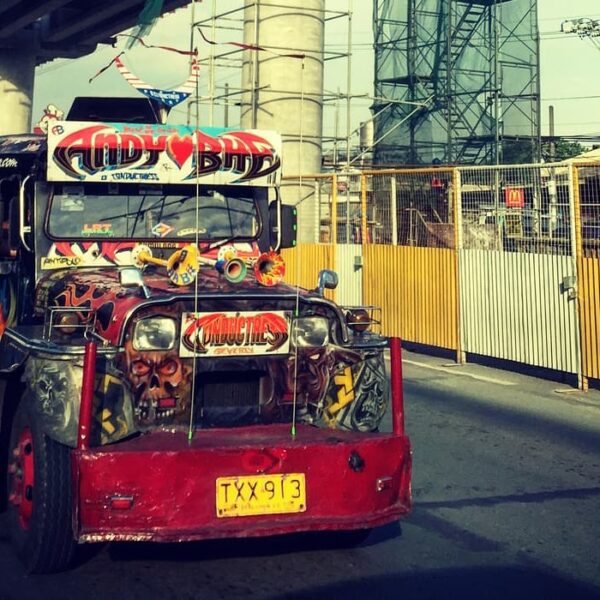What is a Kenyan bus?
With the caveat that for Kenya, it is the key mode of public transport. Until 1999, it was the only one in Nairobi and in the whole country. Then the situation began to improve, but they still play a huge role. Matatu are so important to Kenyans that they are specially shown to tourists as part of Kenyan culture. So it is not surprising that this word is consonant with “akuna matata,” the most famous expression in Swahili.
By the way, the word “matatu” itself can be translated from Swahili as “three. No one knows exactly why “three”. Some say that in the 1960s the standard fare was three cents. According to another version, it was due to the original arrangement of passenger seats in three rows. Still others believe that the number 3 had nothing to do with it at all, and associate the matatu with the word “common.” In their opinion, “matatu” is a slang term and translates roughly as “dormitory”. There is even an obviously far-fetched version that it is simply a “cab.
According to recent surveys, 70% of Kenyans who use public transportation prefer to travel by matatu.
In 2014 there were 20,000 matatu in Kenya, although in 1993 there were twice as many.
Metropolitan buses differ from those in villages in that they are usually small buses. In the provinces, pickup trucks are more common, and people are crammed right in the back.
At the turn of the 90s and noughties a redistribution of property began in Kenya: gangs began to share buses and routes. At that time, riding in a matatu was simply dangerous: no one adequately protected the passengers. Local newspapers reported that thefts, beatings, rapes, kidnappings, and murders were commonplace in matatu.
Gradually the authorities dealt with the upsurge of violence by distributing all the shuttles into 600 associations, known as SACCOs. All SACCOs must have state registration. Accordingly, the fees from bus owners were no longer paid by the gangsters, but by the state.
In 2003, the authorities tried to regulate the route market. First of all, they limited the number of passengers per bus (previously there could be as many as the conductor would let in). In addition, all matatu were equipped with speed-limiting devices, and drivers were forced to put yellow stripes on the bus bodies indicating the passenger vehicle.
The main task of the driver is to get from one terminus to another as quickly as possible, bypassing traffic jams. The thing is that the owner of the bus pays the driver for the number of trips. Therefore, driving on the wrong side of the road or on the side of the road is not a violation of the rules, but the norm. Like in Dagestan.
In Matatu, by the way, there is a conductor who collects the fare from everyone. Not only does he take the money and give out the change, but he also announces stops in a special way: by banging on the roof of the bus or by whistling. It is more of a signal for the driver than for the passengers. One wonders why the drivers themselves don’t see the stops.
In addition, the conductor at terminal stops is a shouting girl: she shouts out the destination and fare, trying to get passengers as quickly as possible.
It can be difficult to talk inside the matatu because music, often reggae, is constantly blaring from the loudspeakers. Also, the windows are usually open, which adds to the traffic noise.
Almost all new or relatively new matatas are right-hand drive Isuzu. By the way, there is left-hand traffic in Kenya. But no one observes the rules anyway, so there is not much difference.
Within Nairobi the fare is usually less than 100 shillings (62 rubles), but it all depends on the distance. At the top of the sign are the prices. Decorating the minibus is a special ritual. Drivers sacredly believe that the cool design of the minibus will attract them more customers.
If the bus is painted brightly enough and easy to remember, it becomes known in the city, which means that passengers are always ready to take it for a ride. They even give the matatas names for this purpose, as if they were ships. Here’s Roc-A-Fella.
There’s a special market of artists in Nairobi who cover the matatu with graffiti and stickers – about 1,000 people do it. Decorators are inspired by sports, music, TV shows, and generally all forms of popular culture. Many of the drivers and matatu owners are soccer fans. Here’s the Arsenal club bus with Arsene Wenger.
